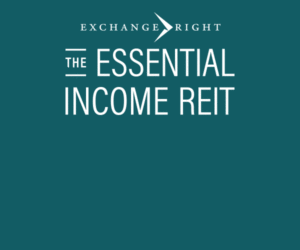Opportunity Zones and “Market Imperfections”
November 19, 2018 | James Sprow | Blue Vault
 When government looks for ways to foster economic development generally or investment in specific sectors or technologies, there are many ways to do so. There are direct expenditures such as spending on infrastructure, there are subsidies such as those for ethanol production, wind and solar power projects, and tax incentives such as deferrals and credits for particular types of private investments or expenditures. Another approach has been to use taxes on such things as hotel and restaurant revenues to subsidize quasi-public goods like stadiums and arenas for major sports teams. The economic theories used to justify government intervention in the market for certain projects and investments are usually based upon “market imperfections,” meaning, the free market is not doing what needs to be done. Why is that the case?
When government looks for ways to foster economic development generally or investment in specific sectors or technologies, there are many ways to do so. There are direct expenditures such as spending on infrastructure, there are subsidies such as those for ethanol production, wind and solar power projects, and tax incentives such as deferrals and credits for particular types of private investments or expenditures. Another approach has been to use taxes on such things as hotel and restaurant revenues to subsidize quasi-public goods like stadiums and arenas for major sports teams. The economic theories used to justify government intervention in the market for certain projects and investments are usually based upon “market imperfections,” meaning, the free market is not doing what needs to be done. Why is that the case?
One explanation for “market imperfections” that require government’s corrective actions is the “spillover effects” argument. If private investors can’t capture a significant portion of the benefits that their investments will create for the broader community, government can step in to offer incentives (direct subsidies or tax benefits) that, in theory, share a portion of the benefits that will accrue to the broader community with the private investor. For example, a private investor might capture the benefits to properties surrounding a golf course by simply owning the surrounding properties before constructing the golf course. But, a private investor can’t necessarily capture the benefits to surrounding properties when building, say, a shopping center or an office building. Those “spillover effects” may be substantial and beneficial to the broader community, and government may step in to encourage such projects.
A more recent example of such government attempts to spur investments in assets that it has deemed to have social benefits or positive “spillover effects” are real estate projects in areas that are designated as “distressed” or underdeveloped using the concept of “Opportunity Zones.” Opportunity Zones are now designated by all 50 states as economically distressed census tracts where new investments may be eligible for preferential tax treatment. Opportunity Zones were added to the tax code by the Tax Cuts and Jobs Act on December 22, 2017. Opportunity Zones are described as an economic development tool, designed to spur economic development and job creation in distressed communities.
Opportunity Zones provide tax benefits to investors by deferring taxes on prior gains invested in a Qualified Opportunity Fund (“QOF”) until the earlier of the date on which the investment in the QOF is sold or exchanged, or December 31, 2026. If the QOF investment is held for longer than five years, there is a 10% exclusion of the deferred capital gain. If held for more than seven years, 10% becomes 15%. If the investment in the QOF is for at least ten years, the investor is eligible for an increase in basis of the QOF investment equal to its fair market value on the date that the QOF investment is sold or exchanged. This means there is no taxable capital gain.
How do investments in Opportunity Zones actually work? An example presented by WealthManagement.com, by Derek Uldricks, President of Virtua Partners, a global private-equity real estate investment firm that recently created its first opportunity zone fund, is as follows:
“Assume an investor has a $1 million gain in Apple stocks and decides to sell. To keep it simple, let’s also assume the investor is in a 20 percent tax bracket, totaling $200,000 in capital gains tax. But instead of paying, the investor reinvests the $1 million in an Opportunity Fund.
Here’s what happens next:
•Deferment of gains: By investing those gains in the Opportunity Fund, the tax due on those gains is deferred until the earlier of selling the investor’s interest in the Fund or December 31, 2026.
• If the investor holds the investment for 5 years: That payment of $200,000 is completely deferred, plus the investor gets a 10 percent step-up in basis on the original gain deferred. So now the investor pays $180,000, saving $20,000 in capital gains taxes.
• If the investor holds for 7 years: They receive an additional step-up in original basis of 5 percent, and the capital gains tax bill goes down to $170,000, saving $30,000 on the taxes owed from the investor’s initial gain.
• If the investor holds for more than 10 years: the investor pays ZERO capital gains tax on the appreciation of that asset.
Let’s break down the last point.
If the investor holds the $1 million investment for 10 years, any gains made on that investment are tax-free. The investor pays ZERO capital gains tax on all of the appreciation above and beyond the $1 million. So even if the $1 million turned into $3 million, that $2 million in lift achieved through investing in the Opportunity Fund is tax-free.
Essentially, the federal government is allowing the investor to keep the capital gains at 0 percent interest and use those funds to invest in one of these Opportunity Zone projects for 10 years.
After 10 years, the investor pays no capital gains tax on the appreciation of the asset.”
We have seen examples that compare the cash flows from Opportunity Zone investments to the net cash flows after taxes available to an investor who doesn’t utilize the deferrals available with those QOF investments. One example is in a white paper published by EquityMultiple. In that example, the net cash flows were compared over a 10-year holding period. The resulting ending values for the $1 million investments, one of which was taxed at current capital gains rates and one which utilized the Opportunity Zone alternative, showed a difference in ten-year ending values of $488,040 ($1,434,922 for the taxed investment vs. $1,922,962 for the tax-deferred Opportunity Zone alternative). Both are based upon an assumption of an 8% annualized rate of return over the 10 years.
Here’s a key question that needs to be answered when comparing returns to alternative commercial real estate: Is it reasonable to require the same rate of return for investments that utilize the Opportunity Zone tax deferrals when comparing them to other commercial real estate investments? We don’t think so, and here is why.
One reason that “distressed areas” are not receiving the investments in commercial real estate that politicians would like to see is that the risk vs. reward equation is not as favorable to investments in distressed areas. When considering potential deals, REITs and other investors use capitalization rates to compare deals. Capitalization rates are simple ratios of expected net cash flows relative to the price of the potential investment. Other things equal, riskier projects or projects with lower expected growth rates in future net cash flows will require higher capitalization rates to compensate investors for their higher risks and/or lower expected growth rates.
Imagine a commercial real estate firm that is considering multifamily investment projects of equal cost. The first is to be located in an up-and-coming suburban location with a history of stability, rising rents and lowering vacancies. The second is in a “distressed” zone near the downtown. The distressed area has a history of higher crime rates, level or deteriorating rental rates and higher apartment vacancy rates. Any investment committee would expect a much higher rate of return (capitalization rate) on the second project proposal to be willing to consider it. And, assuming that the higher expected rate of return is sufficient to cause the committee to go ahead with the second investment, the cash flows from the project must materialize over five to seven to ten years to prove the decision was a wise one.
From the perspective of the marketing team at a commercial real estate firm that will be promoting Opportunity Zone investments, the potential tax benefits will only be part of the equation. The investments in the Opportunity Zones via Qualified Opportunity Funds must also be required to provide higher expected risk-adjusted rates of return to justify the commitments.
For these reasons, Blue Vault will be watching the evolution of Qualified Opportunity Funds that will be raising capital and investing in Opportunity Zone projects to see if their sponsors are realistic in discussing both the potential tax benefits as well as the higher required rates of return that should accompany the riskier projects made in distressed areas.
Look for future articles on Opportunity Zones and Qualified Opportunity Funds at www.BlueVaultPartners.com.
Sources: Blue Vault, EquityMultiple, WealthManagement. com











